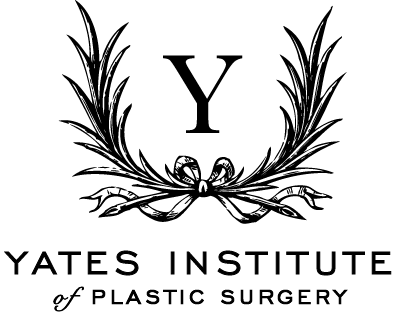Am I too young for a facelift?
The passing of time affects our whole body, especially the face. Wrinkles, folds and line can occur. In addition, due to the loss of collagen and elastin cells with age, our facial structure no longer has the same tonus and begins to look unsightly.
In addition to the time factor, sun exposure, smoking, pollution, and other dermatological conditions throughout life significantly affect the quality of the skin.
The outcome? An aged face with an elongated appearance, cheeks without firmness, eyebrows that go down over the eyes, double chin, and folds.
The solution for all the above is the facelift, thanks to the latest technologies in cosmetic surgery.
Details about the facelift surgery
The facelift surgery is performed under local anesthesia associated with anesthetic sedation or under general anesthesia. The intervention lasts on average 3-4 hours and can be associated with upper and lower blepharoplasty and other cosmetic surgical and non-surgical procedures.
Facial lifting is the most effective method for alleviating the accentuated phenomena of aging on the face. It can also be used as a palliative technique in facial paralysis.
There are many variants of facelift that address the forehead, the middle face region, or the cervical region. They can be made independently or in various combinations. Preoperative consultation and evaluation are essential to decide whether the patient has a surgical indication or not. Often, patients request non-surgical facelift interventions to minimize the side effects and possible complications of a surgical facelift, but the results are not as good. However, it is good to recognize that, in certain situations where the patient has contraindications for surgery, non-surgical options may be feasible.
FRONT LIFTING
Loss of elasticity of elastic fibers, aging of collagen, and decreased muscle fibers are the main causes of wrinkles and aging.
Frontal lifting is an aesthetic procedure that aims to tighten the forehead and temples. A hidden incision behind the hairline allows the surgeon to assess which anatomical structures are affected and treat them accordingly. For example, suppose the degree of ptosis (sagging) is not accentuated. In that case, the procedure can be performed endoscopic, with three small incisions through which the region can be approached with the help of a mini video camera. After the procedure, you have to wear an elastic bandage for 2-3 days; surgical sutures are removed after 7-10 days.
CLASSIC FACE LIFTING
This procedure addresses the region of the cheeks, mandible, and neck. Among the methods described for performing this operation, one which gives great results involves the tensioning of both the skin and the subcutaneous musculoaponeurotic structures (SMAS - Superficial - Musculo-Aponeurotic System). In addition, the correction of the imperfections of the neck can be performed in this procedure. Postoperative scars are usually less visible after 2-3 months. They are located behind the ear and occipital region, anterior to the ear, and at the level of the scalp. However, you must keep in mind that scarring is a process with individual characteristics, largely determined genetically, so that variations can occur from individual to individual. The operation lasts about 2-3 hours and can be performed under local or general anesthesia, depending on the patient's preferences and health.
After the operation, the patient can go home, but generally, a night of surveillance is indicated for close monitoring as bleeding may occur in the immediate postoperative period. A compressive dressing will be worn 2-3 days postoperatively. Visible anterior ear sutures are suppressed at 5-6 days, the rest at 7-10 days. Normal postoperative bruises disappear in 14-21 days. After this interval, the recovery is complete. A feeling of tension in the skin can accompany the healing process.
MINI FACIAL LIFTING
For people whose aging process is slow but do not want to resort to a major operation like the classic facelift, a "mini facelift" can restore a younger appearance to the cheeks and especially the neck. An S-shaped incision anterior and posterior to the ear allows the surgeon to remove excess skin and stretch the remaining skin. The operation lasts between 1.5 - 2.5 hours. Recovery is similar to the classic facelift, only faster.
After any of the operations described, the patient's slight pain might be felt completely controlled by minor painkillers. More often, a feeling of tension that gradually subsides is described by patients. Healing is usually done in 10-14 days, although sometimes the disappearance of bruises can take up to 21 days, during which time sun exposure is contraindicated.
Candidates for a facelift
Around the age of 40, the first anatomical signs of apparent aging generally appear. Then the time may come, for both women and men, to want to make a change regarding their appearance.
The indication can be established with certainty when the patient is sitting, traction of the skin of the cheek or face is made upwards or backward, and there is an apparent aesthetic improvement of the signs of aging. The maneuver is performed with two fingers and provides a good picture of what to expect after the operation.
In men, there are certain peculiarities (the presence of hairs in the chin area, they appear less often), which leads to additional precautions.
The ideal age for a facelift
Women and men who use facelifts are usually over 30 years old, but different facelifts can be performed earlier. This is because changes in the mid-level of the face occur earlier than those in the lower level. Thus, sagging cheekbones is the first sign of the passage of time, and the plastic surgery is the one that fixes this situation.
A lower (classic) facelift is most often performed on people over 35, helping to reduce the appearance of deep wrinkles and skin left on the mandible and neck, restoring firmness and a youthful appearance. At the same time, frontal lifting reduces or eliminates deep wrinkles in the forehead region, and temporary lifting is practiced to raise the outer part of the eyebrows.
Final words
The natural aging process, lifestyle choices, the effects of gravity, sun exposure, and the stress of daily life can leave visible marks on the face. For example, deep folds formed between the nose and mouth; sagging chin; layers and deposits of fat around the neck.
Lifting can "turn back time" by visibly erasing some of the signs of aging by removing excess fat and skin, tightening the muscles underneath, and stretching the skin on the face and neck.
To sustain the results of the procedure for as long as possible it’s important to consider the surgeon's recommendations for a natural long-term effect.


